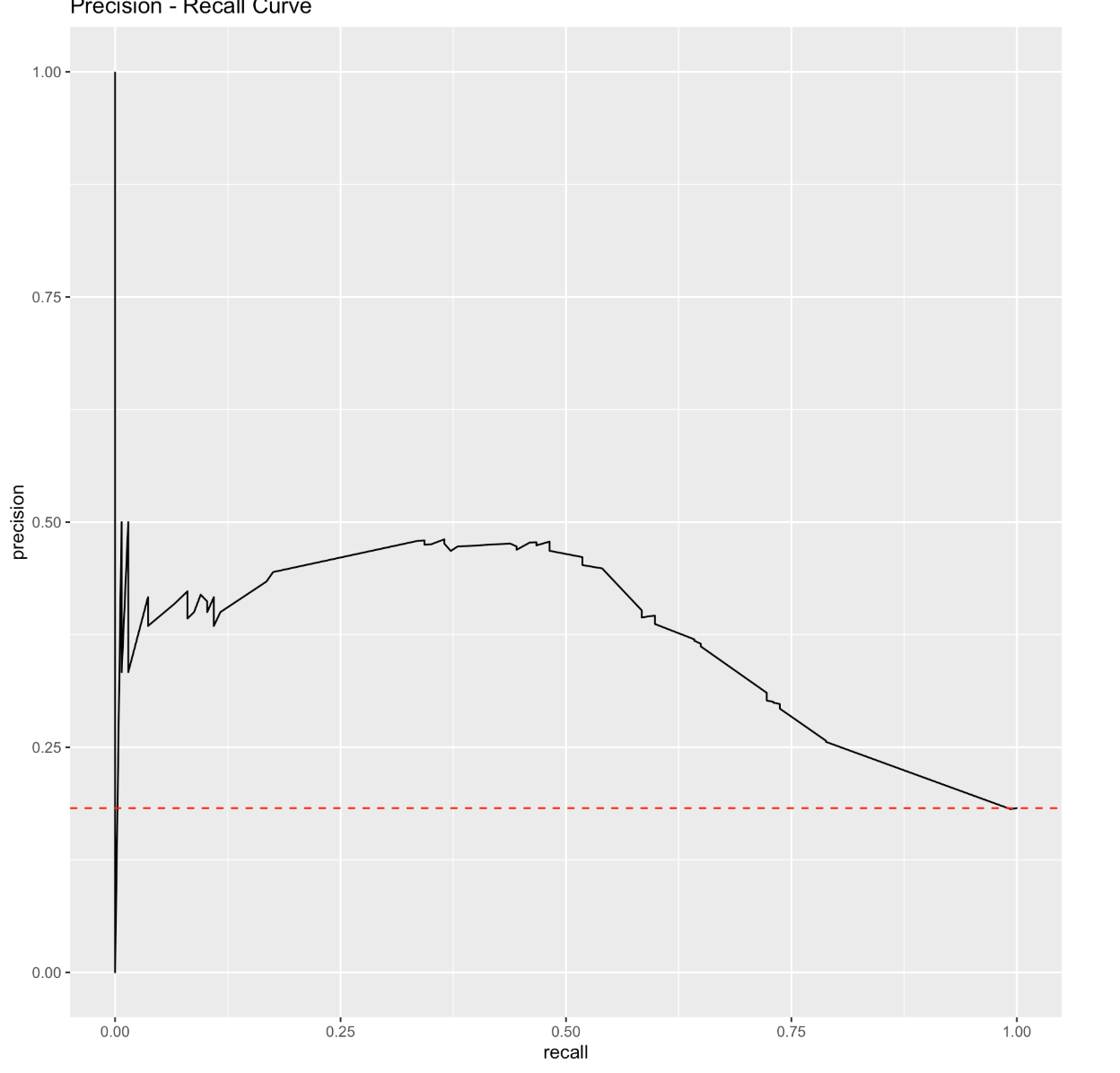I have plotted the above precision recall curve for a binary classification problem where the classes are imbalanced. Classes are either negative or positive There are 3018 observations and 550 of them are positive. This means that only about 18% of the data are positive results. I read from here that the baseline for the precision recall curve is the ratio of the positives to the number of observations (in a balanced dataset the baseline would be 0.5). This is differently from the AUC baseline which is always fixed.
The Precision Recall AUC score is only .44, but the ROC AUC score is .72. What exactly does this mean? I know the ROC AUC is misleading for imbalanced datasets, but a precision recall AUC score of only .44 seems very low. How do I interpret this? Is it actually a bad score? How can I understand this curve in reference to the baseline?

